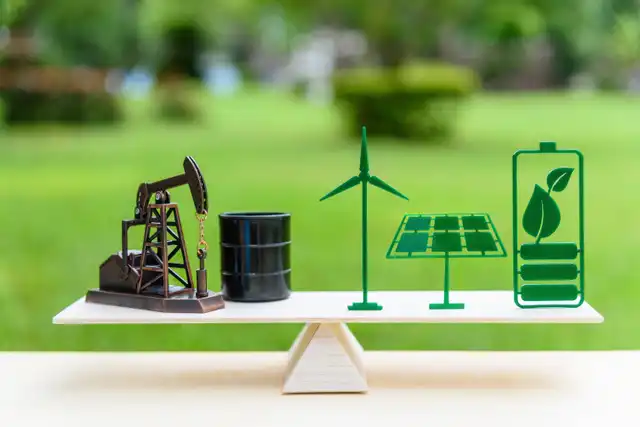
As COP27 was progressing in Sharm El-Sheikh, Egypt, Vijay Vaitheeswaran, the global energy and climate innovation editor of The Economist, made a compelling observation. He said, “We will see a much stronger focus on how the energy industry itself can play a role as a decarboniser. It’s about, in my view, a grown-up way of understanding that the oil and gas is here to stay. A number of countries, especially emerging markets, are going to rely on it.”
This resonates strongly in India – a rich emerging market that caters to a population of 1.32 billion and is expanding. For countries such as ours, especially, understanding the true scope and potential of the traditional energy industry will be pivotal to long-term sustainable energy transition. Indeed, in this regard, COP27 has been heartening as the first UN Climate Change summit where oil and gas executives were welcomed to official proceedings.
With energy continuing to be central to the livelihoods of billions of people, switching off the tap is not an option; the real deal is to ensure that the energy sector transitions into a ‘clean regime’ and that is happening already. India has been unequivocal in this stance. It has always advocated for clean energy transition that does not stymie development, and this is reflected in the Long-Term Low Emission Development Strategy launched by Bhupender Yadav, Union Minister for Environment, Forest and Climate Change. This is also reflected in the nation’s commitment to the rational utilization of national resources with due regard to energy security.
What then would be the key takeaways for India – and the world – from COP27?
Energy security is central to climate progress
India’s position at COP27 is a message to the world – especially on the need to accept the realities of all developing nations – that low carbon development transition in the energy sector should not impact energy security, energy access and development. Energy security is not at odds with climate action as UAE’s Special Envoy for Climate Change, Dr Sultan Al Jaber observed, “We need maximum energy, minimum emissions.” For this, it is important to pursue all pathways, without wavering on the commitment to cut emissions of the current energy infrastructure – a position that Union Minister for Petroleum and Natural Gas Hardeep Singh Puri concurred to in a media interview.
Energy transition requires holistic solutions
The pathway to Net Zero requires an energy transition strategy that is holistic. In addition to embracing low-emission energy production pathways, supported by advanced technology that enhances the efficiency of operations, it is important to integrate the possibilities offered by solar, wind, geothermal and hydrogen. It is also important that we tap into nature-based solutions for decarbonization such as developing green belts, encouraging biodiversity growth and developing appropriate carbon sinks. The energy sector in India has already made commendable progress in this regard, especially in harnessing geothermal energy from repurposed wells, and converting pipelines to solar.
Climate action hinges on inclusivity
One of the most important takeaways from COP27 is that real climate action – which needs to be just and pragmatic, taking into consideration the needs of billions of people – must be truly inclusive. The pushbacks on the loss and damage fund and the extent of disagreements that surfaced across all negotiations point to that one critical aspect. There is need for climate action to be equitable and there is urgency to deliver solutions that developing and vulnerable nations need. India, along with many similar voices from the Global South, reiterated this, stating that their committed adherence to Net Zero must not be at the cost of infrastructure development and socio-economic progress, more so because they have the lowest historical greenhouse gas emissions.
Accelerating biodiversity is a strategic priority
Holistic solutions for climate change must also include accelerating and nurturing biodiversity. As India stated, its strong record of enhancing forest and tree cover in the past three decades, complemented, not deterred, economic growth. The country is also on track to fulfilling its Nationally Determined Contributions (NDC) commitment of enabling 2.5 to 3 billion tonnes of additional carbon sequestration in forest and tree cover by 2030. Developing mangroves, such as the Ravva greenbelt programme, building desert parks, taking up avifauna protection and providing drinking water facilities for wild animals are all incremental steps towards mitigating the impact of climate change.
Working with the community for a greener tomorrow
Not surprisingly, the most important message from COP27 is that shaping a greener tomorrow and preserving our planet for future generations needs concerted action that places the community at the heart of the narrative and action. The challenge in addressing climate change, as was evident from the diverse voices we heard at the summit, is that the world doesn’t have a one-size-fits-all formula. It needs solutions that are curated to the specific needs of every community, and that means creating solutions tailored to their requirements and aspirations leading not just to a Net Zero future that we all aspire for but also achieving net positive gains.
Climate security is integrally linked not only to growth but also to peace. And the first step towards that starts with ensuring energy security – the pathway to economic, social and climate progress. Moving on from COP27, and as we prepare for COP28, the energy sector has a greater than ever role to play in enabling a world marked by sustainability, decarbonization and unhinged success.
Source: https://www.outlookindia.com/
